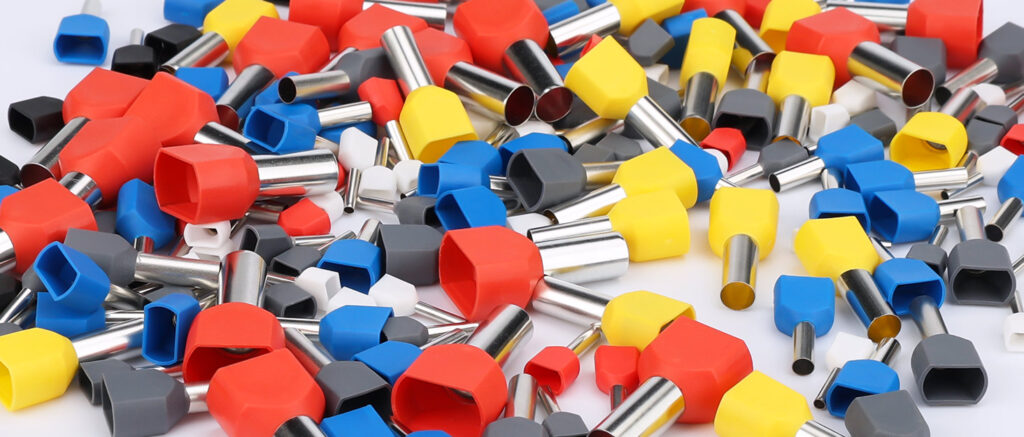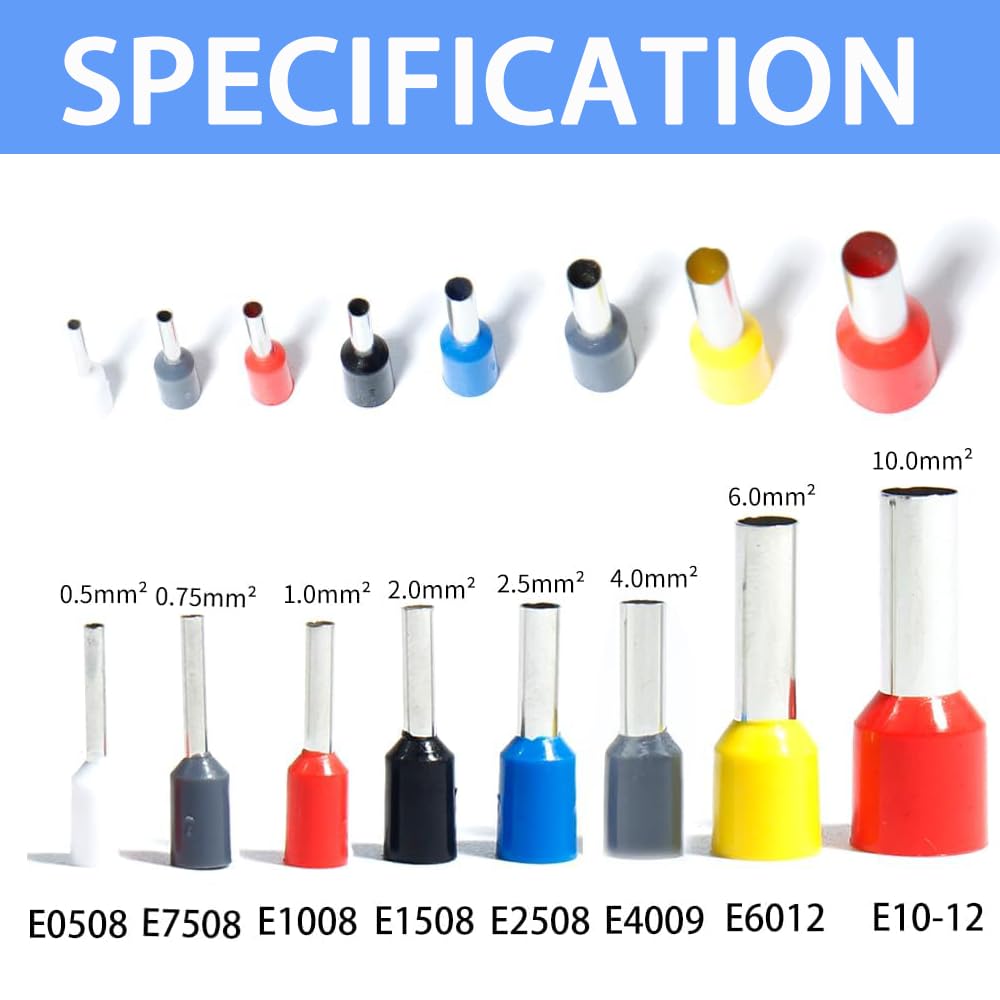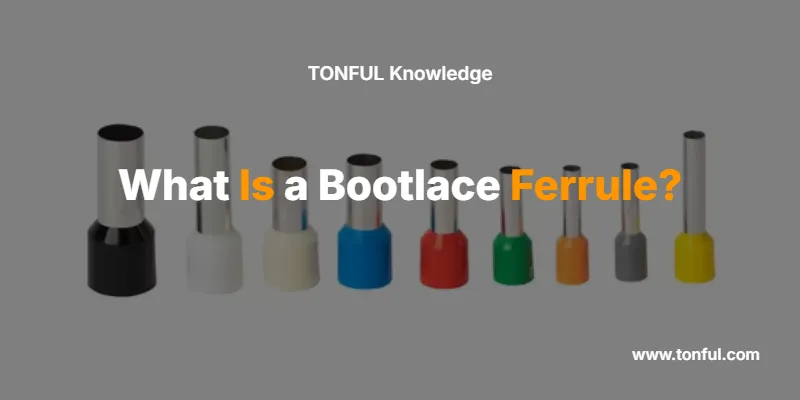A bootlace ferrule is the small protective tip found at the end of shoelaces and bootlaces that prevents fraying and makes threading through eyelets easier. Also known as an “aglet,” this seemingly simple component plays a crucial role in footwear functionality and can significantly impact your daily shoe-wearing experience.
Understanding bootlace ferrules helps you choose better quality laces, perform proper maintenance, and solve common shoelace problems that affect millions of people daily.
What Exactly Is a Bootlace Ferrule?

A bootlace ferrule is a rigid protective sheath that encases the end of a shoelace or bootlace. The term “ferrule” comes from the Latin word “viriola,” meaning “little bracelet,” while “aglet” derives from the Old French “aguillette,” meaning “needle.”
Primary Functions:
- Prevents fraying: Keeps lace fibers from unraveling
- Enables easy threading: Creates a firm tip for passing through eyelets
- Provides durability: Protects the most vulnerable part of the lace
- Maintains appearance: Keeps laces looking neat and professional
Key Differences: Bootlace Ferrule vs. Regular Shoelace Tips
Here is a table that shows the main differences between bootlace ferrules and standard shoelace tips:
| Feature | Bootlace Ferrule | Standard Shoelace Tip |
|---|---|---|
| Material | Metal, thick plastic, or reinforced composite | Thin plastic or basic polymer |
| Durability | High – designed for heavy-duty use | Moderate – everyday wear |
| Length | 8-15mm typically | 5-10mm typically |
| Wall Thickness | 0.5-1.2mm | 0.3-0.7mm |
| Weather Resistance | Superior – withstands moisture/temperature | Basic protection |
| Cost | Higher due to premium materials | Lower – mass production |
| Applications | Work boots, hiking boots, heavy footwear | Dress shoes, casual sneakers |
| Replacement Difficulty | May require special tools | Easy hand replacement |
Types of Bootlace Ferrules by Material

Metal Ferrules
Best for: Heavy-duty work boots, military footwear, outdoor gear
Advantages:
- Maximum durability and longevity
- Excellent threading performance
- Weather and chemical resistant
- Professional appearance
Materials used: Aluminum, brass, stainless steel, zinc alloy
Plastic Ferrules
Best for: Athletic shoes, casual footwear, children’s shoes
Advantages:
- Lightweight and flexible
- Cost-effective production
- Wide color variety available
- Easy to replace
Common plastics: Polyethylene, polypropylene, nylon, thermoplastic elastomer
Composite Ferrules
Best for: High-performance athletic gear, specialty footwear
Advantages:
- Combines metal strength with plastic flexibility
- Optimal weight-to-strength ratio
- Advanced weather resistance
- Customizable properties
How Bootlace Ferrules Are Made
The manufacturing process varies by material but follows these general steps:
- Material preparation: Raw materials are heated and shaped
- Forming: Tubes are created using injection molding or extrusion
- Sizing: Precise diameter and length specifications are cut
- Quality testing: Durability and fit standards are verified
- Application: Ferrules are attached to laces using adhesive or crimping
💡 Expert Tip: Higher-quality ferrules use dual-bonding methods (adhesive plus mechanical crimping) for superior attachment strength.
When and Why You Need to Replace Bootlace Ferrules
Signs Your Ferrules Need Replacement:
- Cracking or splitting: Visible damage to the ferrule wall
- Loose attachment: Ferrule slides or rotates on the lace
- Difficulty threading: Enlarged or deformed tip opening
- Frayed lace ends: Fabric extending beyond the ferrule
- Discoloration: Permanent staining or oxidation
Common Replacement Scenarios:
| Situation | Recommended Action | Timeline |
|---|---|---|
| Daily office wear | Monitor for wear | Replace every 6-12 months |
| Heavy work boots | Regular inspection | Replace every 3-6 months |
| Athletic training | Check after intense use | Replace every 2-4 months |
| Outdoor activities | Inspect before major trips | Replace as needed |
How to Choose the Right Bootlace Ferrule
Selection Criteria Checklist:
✓ Lace Compatibility
- Measure your lace diameter (typically 3-8mm)
- Choose ferrule inner diameter 0.2-0.5mm larger than lace
- Consider lace material (cotton, polyester, leather, paracord)
✓ Use Environment
- Indoor/office: Basic plastic sufficient
- Outdoor/work: Metal or reinforced composite
- Athletic: Flexible composite or high-grade plastic
- Formal: Metal for professional appearance
✓ Attachment Method
- Permanent: Adhesive-bonded (most common)
- Replaceable: Crimp-style or snap-fit designs
- DIY-friendly: Heat-shrink or twist-lock types
⚠️ Safety Note: Always ensure ferrules are properly secured before use to prevent choking hazards or equipment failure in professional settings.
Professional Installation vs. DIY Replacement
When to Use Professional Services:
- Specialty work boots with warranty considerations
- Custom or expensive footwear
- Metal ferrules requiring special crimping tools
- Safety-critical applications (climbing, industrial work)
DIY Replacement Process:
- Remove old ferrule: Cut off damaged ferrule carefully
- Prepare lace end: Trim to clean, square edge
- Apply adhesive (if required): Use appropriate bonding agent
- Install new ferrule: Slide on and crimp or heat-seal
- Test fit: Ensure proper threading through eyelets
🔧 Expert Tip: Use a small amount of clear nail polish as emergency ferrule adhesive for temporary repairs.
Bootlace Ferrule Maintenance and Care
Daily Care Practices:
- Inspect regularly: Check for damage during lacing
- Clean appropriately: Remove debris and moisture
- Store properly: Avoid extreme temperatures and UV exposure
- Replace proactively: Don’t wait for complete failure
Extended Life Tips:
- Rotate between multiple pairs of laces
- Use appropriate lacing techniques to reduce stress
- Consider upgrading to higher-quality ferrules for heavy-use footwear
- Keep spare ferrules for emergency replacement
Troubleshooting Common Bootlace Ferrule Problems
Problem: Ferrule keeps sliding off the lace
Solution: The ferrule diameter is too large. Choose a smaller size or add a small amount of appropriate adhesive.
Problem: Difficult to thread through small eyelets
Solution: The ferrule may be too thick or deformed. Replace with a thinner profile or taper the tip carefully with fine sandpaper.
Problem: Ferrule cracks in cold weather
Solution: Switch to more flexible materials like thermoplastic elastomer or metal for extreme temperature conditions.
Problem: Lace frays inside the ferrule
Solution: Remove the ferrule, trim frayed material, and reinstall. Consider using lace ends with heat-sealed cores.
Historical and Cultural Significance
Bootlace ferrules have existed for centuries, evolving from simple metal wrappings to today’s engineered solutions. The term “aglet” gained popular recognition through the animated series “Phineas and Ferb,” highlighting how these small components often go unnoticed despite their importance.
Historical Development:
- Ancient times: Wrapped metal or bone tips
- Medieval period: Decorative metal aglets as status symbols
- Industrial Revolution: Mass-produced plastic versions
- Modern era: Engineered materials and specialized applications
Frequently Asked Questions About Bootlace Ferrules
What makes bootlace ferrules different from regular shoelace tips?
Bootlace ferrules are typically made from more durable materials and designed for heavier-duty applications. They’re often longer, thicker, and more weather-resistant than standard shoelace tips used on casual footwear.
How long do bootlace ferrules typically last?
With normal use, quality ferrules last 6-12 months. Heavy-duty work environments may require replacement every 3-6 months, while light office wear can extend this to over a year.
Can you replace bootlace ferrules yourself?
Yes, most ferrules can be replaced at home using basic tools. However, metal ferrules may require special crimping tools, and safety-critical applications should use professional installation.
What size ferrule do I need for my bootlaces?
Measure your lace diameter and choose a ferrule with an inner diameter 0.2-0.5mm larger. Most bootlaces range from 4-8mm diameter, requiring ferrules sized accordingly.
Are metal ferrules worth the extra cost?
For heavy-duty work boots, outdoor gear, or frequently used footwear, metal ferrules provide superior durability and weather resistance that justifies the higher cost.
Why do some bootlace ferrules have ridged surfaces?
Ridged or textured ferrules provide better grip when handling laces and can improve the crimping attachment to the lace material.
Can damaged ferrules affect boot performance?
Yes, damaged ferrules can make lacing difficult, cause premature lace failure, and in safety footwear applications, may compromise proper fit and protection.
What’s the best material for outdoor bootlace ferrules?
Stainless steel or aluminum ferrules offer the best combination of durability, weather resistance, and weight for outdoor applications.
Quick Reference: Bootlace Ferrule Selection Guide
- For Work Boots: Metal (aluminum/stainless steel), 10-15mm length
- For Hiking Boots: Composite or metal, weather-sealed, 8-12mm length
- For Athletic Shoes: High-grade plastic or composite, flexible, 6-10mm length
- For Dress Shoes: Metal (brass/chrome), slim profile, 5-8mm length
- For Children’s Shoes: Soft plastic, bright colors, safety-certified, 5-8mm length
Conclusion: Why Bootlace Ferrules Matter
Understanding bootlace ferrules empowers you to make better footwear choices, perform proper maintenance, and solve common lacing problems before they become frustrating daily issues. Whether you’re selecting work boots for a demanding job site or choosing athletic shoes for training, the quality and appropriateness of your lace ferrules directly impacts your footwear experience.
Key Takeaways:
- Choose ferrule materials based on your specific use environment
- Regular inspection prevents unexpected lace failures
- Quality ferrules are a worthwhile investment for frequently worn footwear
- Professional installation may be necessary for safety-critical applications
For complex bootlace ferrule selection or specialized footwear applications, consult with certified footwear specialists who can provide expert guidance based on your specific needs and safety requirements.

